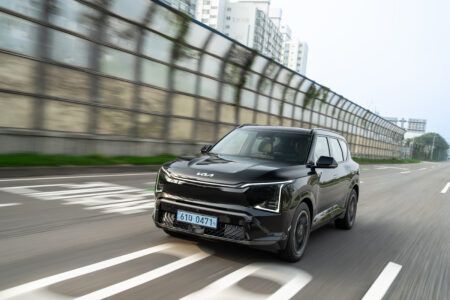The US school bus is a cultural icon. With its distinctive yellow livery, this design classic has inhabited the roads of North America in various forms since 1939, and the region is unique in having a fleet of dedicated buses for transporting school students. Most other areas use ordinary public-service buses for the school runs. On average 480,000 yellow buses carry upwards of 25 million children to school on a daily basis in the US. With only 1% of these buses currently running on electrified powertrains, that means a lot of gas-guzzling diesel engines polluting the air.
President Elect Joe Biden’s Build Back Better plan for creating a more resilient, sustainable economy proposes making all American-made buses zero-emission by 2030, starting with the school bus fleet, which would convert within five years.
Why a focus on electric school buses? Unlike other green policy pledges, which may be difficult for the new president to fulfil if his party doesn’t have a majority in the Senate, this one is likely to achieve a lot of bipartisan support. It’s difficult to campaign against clean air for children without coming across as uncaring, so few politicians may want to do so. For example, poor air quality has been proven to be responsible for high rates of asthma, cancer, and heart disease; and research by scientists at the Harvard T.H. Chan School of Public Health has shown that just a small increase in fine-particulate pollution, such as that from the diesel engines of school buses, results in a 15 percent increase in the death rate due to COVID-19. Yellow school buses make around a billion trips each year. Switching over to more environmentally friendly electric vehicles could drastically reduce these harmful emissions. A 2018 report by the US PIRG Education Fund found that converting US school buses from diesel to electric would cut emissions by 5.3 million tons – the equivalent of taking about a million cars off the road.
Another attraction for politicians is that converting to electric buses will create a lot of jobs in the supply chain in North America. It has to be remembered that as the US and Canada constitute the sole global markets for these dedicated yellow buses, they are nearly all manufactured on-shore. In the US, electric buses are built at facilities in Alabama, California, Georgia, Indiana, Minnesota, New York, and both North & South Carolina. Components come from many other locations throughout the United States. Large-scale production of these vehicles would not only create thousands of jobs but could attract other electric vehicle component suppliers to invest in the United States, thereby making the entire automotive sector better able to compete for the fast-growing zero-emission vehicle market.
Finally, school buses are a good starting point for a national green policy and an effective means of assisting a reboot of the economy after the shock of COVID-19. It also makes sense given the unusual makeup of the US bus market which is heavily slanted toward school buses: in 2020, the USA registered 40,714 school buses, and only 5,402 city buses.
The challenges for Biden’s zero-emissions policy are obvious. In 2019, over 40,000 school buses were registered in the US, of which a mere 240 were electrified non-emission vehicles. Many school districts are running pilot projects with electric school buses, but orders are extremely low, and many electric bus projects have stalled in their pilot stages due to a lack of federal assistance. One major exception is in Virginia, where Dominion Electric, in conjunction with local school districts has set up the largest electric school bus project in the country, with 50 electric school buses in service in 2020, and full electrification of the fleet of 1,500 buses planned by 2030. If Biden’s policy kicks in, one of the challenges nationally will clearly be in meeting demand. Interact Analysis says that over 560,000 school buses are currently projected to be built in the next 10 years, of which slightly less than 27,000 will be electrified. Getting anywhere near the 100% zero-emission school buses target will therefore require an exponential jump in capacity for electric bus OEMs and their suppliers.
It is likely that the biggest manufacturing capacity in the short-term would be held by the current incumbents – Novabus, Thomas Built and IC Bus – owned by Navistar. Additionally, Thomas Built and IC Bus are already developing electric medium-duty trucks. At these companies, a school bus and a medium-duty truck use a common chassis so, effectively, they have already offset some of the development costs for electric school buses. They will also be able to leverage the scale of the medium-duty truck market to lower the unit cost of school buses. Both companies can further lower their costs because of benefits that come from their international corporate owners. In the case of Navistar-owned IC Bus, Navistar is partly owned by VW and will soon be acquired by VW in full; and in the case of Thomas Built, it is owned by Daimler. Both VW and Daimler have large battery contracts for their other vehicle segments, including passenger cars.
Canada’s Lion Electric will also do well because it has first mover advantage in the electric school bus segment. In the table below, although this data isn’t specific to school buses, we can see the currently very high share that Lion Electric holds in the electric bus market. However, we do expect it to lose market share over the forecast period to its larger and better-funded incumbents.
The challenge of cost
The conversion of the US school bus fleet to all-zero emission will have massive financial implications. Prior to the Biden election, the key financial driver of the EV market was the VW mitigation fund. During Diesel gate, VW had to pay billions of dollars to the US to fund clean-air initiatives. Much of that cash was diverted to electric school bus development and manufacture, and a lot of it has now been used up.
A major hurdle for school boards considering purchasing electric buses is the upfront cost. While US$100,000 will buy a standard diesel school bus, electric buses are much more expensive, costing up to US$350,000. For most commercial vehicles, there is a strong argument for electrification because the total cost of ownership is often lower. That’s because maintenance is cheap as electric drivetrains have fewer moving parts to wear out or break; and because the cost of the most expensive item in an electric vehicle, the battery, is falling every year. However, the total cost of ownership argument does not hold true for school buses, since they only ever do two daily runs: one at the beginning of the school day, and one at the end. Innovative business models can be a solution to this problem. For example, Dominion Energy in Virginia is looking at an interesting and highly original deployment of school buses when they are not in service which proposes that the dormant vehicles be used as energy stores linked to the national grid. This would help defray some of the initial cost of the vehicles. Upfront costs notwithstanding, the PIRG Education Fund report found that each electric bus would save schools about US$2,000 a year in fuel costs and US$4,400 in maintenance – money that could be spent on school staff, buildings, and materials.
The iconic yellow school buses cover over 3.5 billion miles a year in the US. Many of them transport students to from some of the most disadvantaged and polluted neighborhoods. The proposed electrification of the entire fleet within a relatively short timescale is a big challenge, but it is not an impossible goal, and it would constitute a significant and meaningful investment in the nation’s youth, as well as being a major step towards carbon neutrality.





